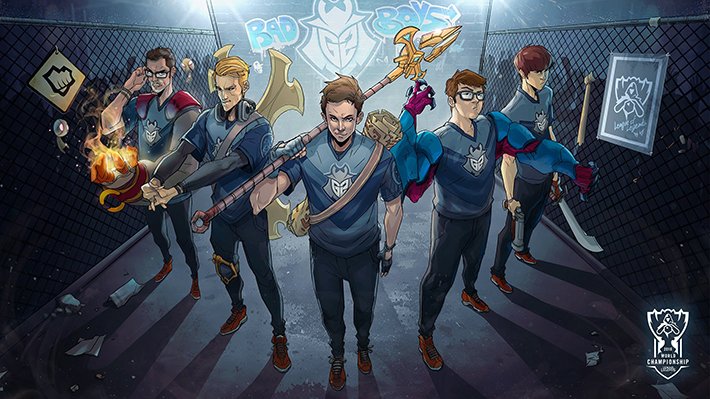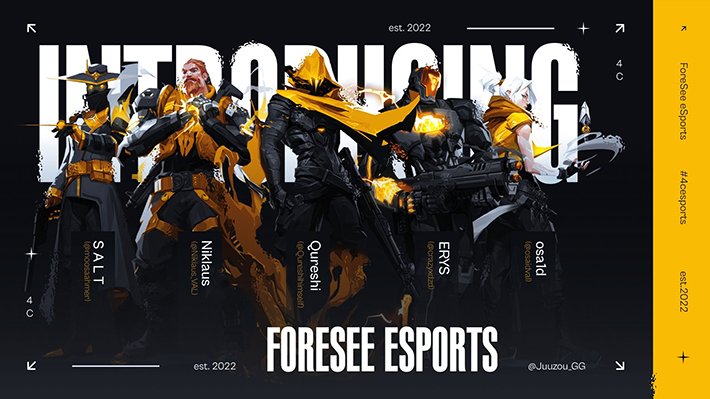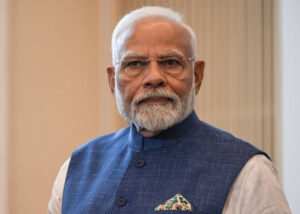Next Big Biz Boom lies in Esports

Lucknow: The emergence of esports as a powerful new-age game business has transformed the gaming industry into a multi-billion-dollar ecosystem, blending entertainment, competition, and technology. India has fast emerged as a cradle for the rapid growth of esports with massive business impact, encashing the potential for revenue generation clearly beating traditional sports.

The Rise of Esports

Esports, or electronic sports, refers to organized competitive gaming, where players compete individually or in teams across various game titles like Dota 2, League of Legends, Counter-Strike, and Fortnite. What began as casual, local tournaments has evolved into a global phenomenon with professional players, teams, sponsorships, and leagues.
According to a report by Newzoo, the global esports market generated around $1.38 billion in revenue in 2022, with projections to grow to $1.87 billion by 2025. With over 532 million global esports viewers by 2023, this industry has seen exponential growth. This rise is being fueled by digital transformation, the rise of streaming platforms like Twitch and YouTube Gaming, and increasing corporate interest.

Key Revenue Streams in Esports
The business model of esports is multidimensional, resembling that of traditional sports leagues in terms of sponsorships, media rights, merchandise, and ticket sales. Below are the primary revenue streams:

Sponsorships and Advertising Sponsorship remains the biggest revenue source for esports, contributing over $833 million (over 60% of total revenue) in 2022. Major brands such as Coca-Cola, Intel, Red Bull, and Mercedes-Benz are increasingly associating themselves with esports events and teams. The high engagement levels of the gaming community make it an attractive medium for advertisers, particularly targeting the 18-34 demographic.
Media Rights The demand for live esports events has led to significant revenue from media rights. Platforms such as Twitch, YouTube Gaming, and even traditional broadcasters like ESPN are paying hefty amounts for exclusive rights to stream tournaments. For instance, Twitch signed a deal to stream Overwatch League games for $90 million in 2018, setting a precedent for future media deals.
Merchandise and Ticket Sales Like traditional sports, esports events attract large audiences, both online and offline. Tickets for esports events like the League of Legends World Championship sell out within minutes, while team-branded merchandise such as jerseys and gear create a lucrative business for teams. Revenue from merchandise and ticket sales crossed $150 million in 2022.
Game Publisher Fees Game developers and publishers, such as Riot Games (League of Legends) and Valve (Dota 2), also benefit financially from esports. They invest in creating tournaments and events, which in turn promote their games and boost in-game purchases. In fact, in-game purchases and microtransactions have become a key revenue driver, as evidenced by Fortnite, which generated over $5.8 billion in revenue in 2021 primarily through in-game sales.
Player Salaries and Prize Pools The competitive landscape of esports is supported by lucrative player salaries and massive prize pools. For example, the Dota 2 International tournament in 2021 boasted a prize pool of $40 million, with the winning team walking away with over $18 million. Esports players have turned professional, with some earning millions annually through salaries, bonuses, and sponsorships. The rise of professional leagues such as the Call of Duty League and Overwatch League has made esports a viable career option.

Esports in India: A Rising Star
India, a country with one of the world’s largest youth populations, is emerging as a significant player in the esports business. The growing penetration of smartphones and affordable mobile internet, thanks to companies like Reliance Jio, has democratized access to gaming. India’s esports market is projected to reach $140 million in 2025 from $40 million in 2022, according to Inc42.
Mobile gaming titles such as PUBG Mobile, Call of Duty Mobile, and Garena Free Fire have dominated the Indian gaming landscape. The popularity of BGMI (formerly PUBG) has also spurred the creation of professional leagues and tournaments in the country. The Nodwin Gaming partnership with ESL, a global esports company, and the emergence of the Skyesports Championship have provided platforms for local talent to shine.
Esports vs. Traditional Sports: A Comparative Look
Esports and traditional sports share many business parallels, but they also differ significantly in terms of audience engagement and revenue models.
Viewership and Fan Engagement While traditional sports like football and basketball have long been dominant in terms of viewership, esports is quickly catching up. The 2021 League of Legends World Championship garnered over 73 million concurrent viewers, surpassing several mainstream sporting events. The digital-first nature of esports, with easy access to live streams and direct engagement through platforms like Discord, makes it more accessible to a tech-savvy audience.
Monetization Models Esports relies heavily on digital distribution, with platforms such as Twitch offering free-to-watch content supported by ads and subscriptions. In contrast, traditional sports generate significant revenue from cable TV rights. However, esports is beginning to adopt pay-per-view models for premier tournaments, further bridging the gap.
Sponsorships and Advertisements As both industries grow, sponsors are increasingly looking at esports for the next wave of advertising. Brands that traditionally focused on football or basketball are now shifting focus to gaming, given the young, engaged audience. Companies like Nike and Adidas have signed esports athletes to sponsorship deals, similar to how they work with traditional sports stars.
Prize Money and Salaries Esports tournaments now rival major traditional sports in terms of prize money. While the top prize pools in esports (such as The International for Dota 2) can exceed those of prestigious sports events like Wimbledon, it’s important to note that top-tier traditional athletes still generally earn more than their esports counterparts due to long-established media deals and sponsorship structures.

Rapid Market Growth
The online gaming market in India is expected to witness a massive surge in the coming years. According to a report by KPMG, the Indian online gaming industry was valued at approximately $2.2 billion in 2022, and it is projected to grow at a CAGR (Compound Annual Growth Rate) of 22%, reaching nearly $8.6 billion by 2027. The rise of mobile gaming, digital payments, and affordable internet access has fueled this unprecedented growth.
The Federation of Indian Chambers of Commerce & Industry (FICCI) projects that the number of online gamers in India will surpass 700 million by 2025, up from 507 million in 2021.

Rise of Mobile Gaming
India has emerged as one of the world’s largest markets for mobile gaming, thanks to its smartphone penetration. As of 2023, India had approximately 650 million smartphone users, and this number is expected to reach 1 billion by 2026. With affordable smartphones and low-cost mobile internet, India has become the top mobile gaming market in terms of downloads, with over 15 billion game downloads in 2022 alone, according to App Annie.
Games like Battlegrounds Mobile India (BGMI), Garena Free Fire, and Call of Duty Mobile have garnered massive followings, transforming the gaming experience from casual to professional.
Esports and Professional Gaming
Esports has emerged as a key segment within online gaming in India. India’s esports market, valued at $40 million in 2022, is projected to grow to $140 million by 2025, as per Inc42. With over 150 million esports gamers in India, platforms like Nodwin Gaming, Skyesports, and Loco are gaining popularity and creating professional avenues for gaming enthusiasts.
Tournaments like the BGMI Pro Series and Free Fire India Championship are attracting millions of viewers online, along with significant investments from sponsors and advertisers. As esports grows, it’s expected to create over 11,000 direct and indirect jobs in India by 2025, including roles for players, coaches, event managers, and streamers.
Influence of 5G and Cloud Gaming
The rollout of 5G technology in India is set to revolutionize the online gaming landscape, especially for mobile and cloud gaming. With ultra-low latency and faster data speeds, 5G will enable seamless, high-quality gaming experiences without the need for expensive hardware.
Cloud gaming platforms like Google Stadia, Xbox Cloud Gaming, and NVIDIA GeForce NOW are expected to enter the Indian market in the coming years. The 5G revolution will also promote the development of augmented reality (AR) and virtual reality (VR) gaming, opening new possibilities for immersive experiences.
Growth in Game Development and Investment
India is not only consuming online games but also becoming a hub for game development. The country has seen a rise in homegrown game development studios such as Nazara Technologies, Dream11, and Games2Win. Indian companies are increasingly creating content tailored to local tastes, and the rise of Indian-themed games like FAU-G and Real Cricket shows the potential for locally developed titles.
Investments in India’s gaming sector have also skyrocketed. According to Invest India, the sector attracted over $1.6 billion in venture capital investments between 2020 and 2022. Major global gaming companies like Tencent, Sequoia Capital, and SoftBank have taken notice of India’s market potential.
Rise of Fantasy Sports
Fantasy sports have emerged as a major segment in India’s online gaming ecosystem, fueled by the country’s obsession with cricket. Platforms like Dream11, MPL, and My11Circle allow users to create virtual teams based on real-life matches, offering cash prizes based on the team’s performance.
The fantasy sports market in India grew from 90 million users in 2019 to 130 million in 2022, and it is expected to reach 150 million users by 2024, according to a report by The Federation of Indian Fantasy Sports (FIFS). With fantasy sports becoming mainstream, especially during events like the IPL, the segment is poised to grow further.
Regulation and Legalization
With the rise of online gaming, discussions around regulation and legalization have intensified. The Indian government is working on creating a comprehensive framework to govern the gaming industry, particularly in areas such as esports, fantasy sports, and real-money gaming.
In 2022, the government announced plans to regulate online skill-based gaming and prevent illegal activities, such as betting and gambling. A clearer regulatory framework will not only safeguard players but also attract more investments and foster industry growth.

Challenges and Roadblocks
Despite its immense potential, the Indian online gaming industry faces certain challenges:
- Monetization Issues: Although there are millions of gamers, only a small percentage pay for in-game purchases. According to KPMG, just 15-20% of the Indian gaming population engages in real-money transactions. Thus, converting free-to-play users into paying customers remains a challenge for game developers.
- Cultural Barriers: The Indian gaming culture is still in its infancy compared to countries like the US, South Korea, or China. There is a prevailing perception that gaming is a waste of time or that professional gaming is not a viable career option. Educating the masses about gaming’s potential as a career and fostering positive attitudes will take time.
- Data Privacy and Security: As more people engage in online gaming, ensuring data privacy and preventing cyber threats become increasingly important. India’s growing digital infrastructure needs robust security measures to protect user data and transactions.
Opportunities for Growth
Increased Gamification in Other Sectors: Gamification, or the application of game-design elements in non-gaming contexts, presents new business opportunities. Educational games, fitness apps with gaming features, and corporate training tools are emerging sectors where gamification can thrive.
Localized Gaming Content: As the market matures, developers will need to focus on localized content to engage more users. Creating games in regional languages and incorporating culturally relevant themes can significantly boost engagement in rural areas, which remain largely untapped.
Expansion of Female Gamers: India has traditionally been a male-dominated gaming market, but that is changing. The percentage of female gamers has increased to 18% in 2022, according to InMobi, and this is expected to grow as games cater more to diverse interests.






